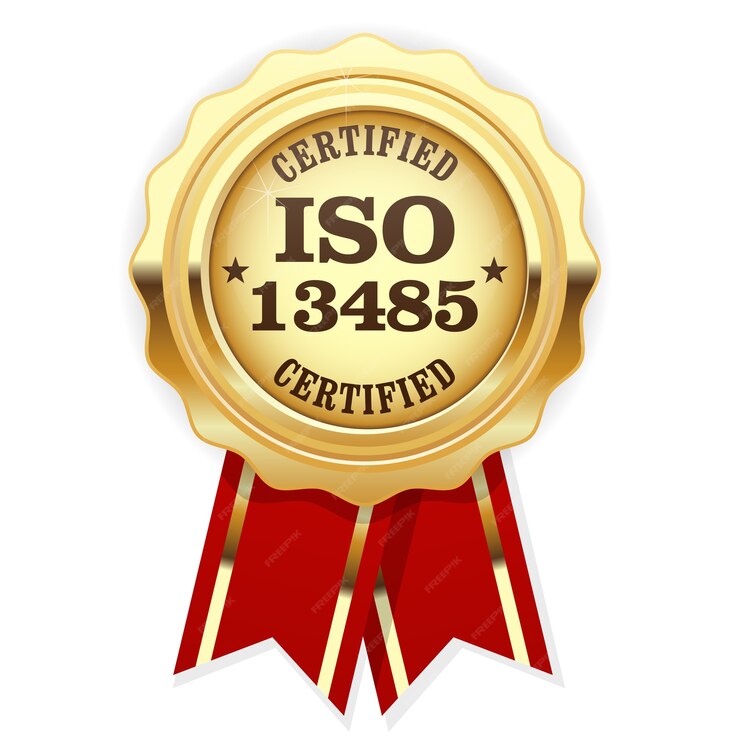I. Introduction
A. Overview of ISO 14001
ISO 14001 is an international standard that outlines the requirements for an effective environmental management system (EMS). Its primary aim is to help organizations safeguard the environment, boost their environmental performance, and ensure compliance with relevant laws and regulations. By implementing this standard, organizations can systematically manage their environmental responsibilities and integrate sustainability into their core business strategies, ultimately reducing their negative environmental impact while enhancing operational efficiency.
B. Significance of ISO 14001 Training
ISO 14001 training is essential for ensuring that employees at all levels comprehend the standard’s requirements and their implications for their roles within the organization. This training educates employees on environmental management concepts, the importance of setting environmental objectives, conducting risk assessments, and implementing controls to mitigate impacts. Additionally, it clarifies the consequences of non-compliance, reinforcing the necessity of adhering to the standards.
C. Brief Overview of the Blog Structure
This blog will serve as a comprehensive guide to ISO 14001 training, organized into several key sections. We will start by examining the fundamental components of the ISO 14001 standard and the benefits it offers to organizations. Next, we will explore the specifics of ISO 14001 training, including methodologies, best practices, and how to develop a training program that aligns with organizational objectives. By the end of this post, readers will clearly understand the significance of ISO 14001 training and how it can enhance both organizational performance and individual professional development.
II. What is ISO 14001?
A. Explanation of ISO 14001 as an International Standard
ISO 14001 is a globally recognized standard that provides a framework for establishing, implementing, maintaining, and improving an Environmental Management System (EMS). It sets forth the necessary criteria for organizations to manage their environmental responsibilities systematically and consistently. This standard enables organizations to identify their environmental impacts, set objectives, and implement processes to minimize these impacts effectively. By focusing on an EMS, ISO 14001 ensures that environmental considerations are integrated into business operations, helping organizations comply with legal requirements and proactively reduce their ecological footprint.
B. Key Principles of ISO 14001
- Continuous Improvement: A core principle of ISO 14001 is the commitment to continuous improvement. Organizations must regularly assess their environmental performance, identify areas for enhancement, and implement strategies for better results over time. The Plan-Do-Check-Act (PDCA) cycle is fundamental to this principle.
- Compliance with Regulations: Compliance with applicable environmental regulations is another critical principle of ISO 14001. The standard requires organizations to identify relevant legal and regulatory requirements related to their environmental aspects and ensure consistent adherence. Compliance forms the foundation for building a robust EMS, reflecting an organization’s commitment to responsible environmental stewardship.
- Stakeholder Engagement: Stakeholder engagement is essential to ISO 14001, recognizing that effective environmental management involves various stakeholders, including employees, customers, suppliers, and the local community. Organizations are encouraged to communicate openly with these stakeholders about their environmental performance and initiatives.
III. Importance of ISO 14001 Training
A. Building Competence and Awareness
ISO 14001 training is crucial for developing a comprehensive understanding of the environmental impacts associated with an organization’s operations. Well-trained employees can identify how their specific roles contribute to the organization’s overall environmental footprint. Training equips them with the knowledge to recognize potential hazards such as waste generation, energy consumption, and resource depletion, enabling informed decisions that mitigate these impacts.
B. Enhancing Compliance and Risk Management
ISO 14001 training is essential for helping organizations comply with legal and regulatory requirements related to environmental management. Given the ever-evolving landscape of environmental laws, employees must stay informed about applicable regulations. Training provides insights into legal obligations specific to the organization’s industry, equipping employees with the knowledge to adhere to these requirements. By understanding legal frameworks, organizations can avoid costly penalties and enhance their credibility.
C. Promoting a Culture of Sustainability
ISO 14001 training plays a crucial role in engaging employees in sustainability initiatives. When employees understand the organization’s environmental policies and objectives, they are more likely to participate actively in sustainability efforts. Training can inspire involvement in projects such as recycling programs, energy conservation initiatives, or community outreach focused on environmental stewardship.
IV. Key Components of ISO 14001 Training
A. Overview of the ISO 14001 Structure
- Understanding the Plan-Do-Check-Act (PDCA) Cycle
A foundational concept in ISO 14001 training is the Plan-Do-Check-Act (PDCA) cycle, which provides a systematic approach to continuous improvement in environmental management. In the Plan phase, organizations set environmental objectives and identify necessary resources. The Do phase involves implementing the plans and procedures. - Familiarity with the Standard’s Clauses
ISO 14001 consists of several key clauses outlining its requirements, and familiarity with these clauses is crucial for effective training. Participants learn about the context of the organization, emphasizing the understanding of external and internal factors influencing environmental performance.
B. Effective Training Methodologies
Interactive learning methods, such as workshops, group discussions, and case studies, are effective in ISO 14001 training. These approaches encourage employee engagement and facilitate knowledge retention. Participants can share experiences, learn from one another, and apply concepts to real-world scenarios. Incorporating hands-on activities, such as environmental audits or simulations, enhances understanding and allows employees to practice applying their skills in a supportive environment.
C. Tailoring Training to Organizational Needs
Organizations should customize ISO 14001 training content to align with their specific environmental challenges and goals. Tailoring training ensures that employees are equipped with the relevant knowledge and skills needed to address their unique circumstances. Customization might include incorporating examples and case studies relevant to the industry, highlighting specific legal requirements, and aligning training with organizational objectives. This personalized approach enhances the training’s effectiveness and increases employee engagement.
V. Steps to Implement ISO 14001 Training
A. Assessing Training Needs
The initial step in implementing ISO 14001 training involves recognizing the target audience, which includes all employees engaged in the environmental management system (EMS). This group spans various levels of the organization, from top management to operational staff. Understanding the specific responsibilities of each role is essential for tailoring the training program effectively. By aligning the training content with the roles of participants, organizations can ensure that employees acquire relevant skills and knowledge that directly pertain to their daily activities.
B. Developing a Training Plan
After assessing training needs, the next step is to develop a comprehensive training plan that outlines clear objectives and goals. These objectives should be specific, measurable, achievable, relevant, and time-bound (SMART), providing a clear direction for what the training aims to accomplish. For instance, objectives could include ensuring that all employees understand their roles in the EMS or achieving a certain level of competency in conducting environmental impact assessments. Establishing clear goals helps guide the training development process and set benchmarks for evaluating success.
C. Delivering the Training
Effective delivery of the training is vital for maximizing engagement and knowledge retention. Training sessions should be designed to be engaging and interactive, incorporating activities that encourage participation and discussion. Techniques such as role-playing, case studies, and group exercises can make the training more dynamic and relatable. An interactive environment not only fosters learning but also encourages participants to share their experiences and insights, promoting a culture of collaboration around environmental management.
VI. Common Challenges in ISO 14001 Training
A. Resistance to Change
A significant challenge organizations face when implementing ISO 14001 training is resistance to change among employees. This resistance often arises from apprehension toward new processes and systems that can disrupt established workflows. Employees may fear that adopting new environmental management practices will add to their workload, create confusion, or lead to performance evaluations based on unfamiliar criteria.
B. Limited Resources
Many organizations face budget constraints that can hinder the implementation of comprehensive ISO 14001 training programs. Limited financial resources may restrict the ability to hire external trainers, invest in high-quality training materials, or facilitate extensive practical exercises. To overcome these challenges, organizations can explore cost-effective training solutions.
C. Keeping Content Relevant
Keeping training content relevant poses another common challenge in ISO 14001 training. Environmental regulations and standards are constantly evolving, and organizations must ensure their training reflects these changes to remain compliant and effective. Regularly reviewing and updating training materials to include the latest information about ISO 14001 standards, legal requirements, and best practices is essential. Organizations can establish a systematic review process, incorporating feedback from employees and stakeholders to identify areas needing updates.
VII. Conclusion
A. Recap of the Importance of ISO 14001 Training
In today’s world, where environmental concerns are central to corporate responsibility, ISO 14001 training is a crucial element of an organization’s environmental management strategy. The standard offers a structured framework for developing, implementing, and continuously improving an environmental management system (EMS). Through this training, employees gain a thorough understanding of their roles in minimizing environmental impacts and enhancing operational efficiency.
B. Call to Action for Organizations
As we strive toward a more sustainable future, it is imperative for organizations to prioritize ISO 14001 training as a strategic investment rather than just a compliance requirement. This training equips employees with the knowledge and tools needed to implement effective environmental management practices, driving continuous improvement and fostering innovation. Organizations that invest in such training not only enhance their operational efficiency but also demonstrate their commitment to sustainability, which can lead to increased customer loyalty and a competitive edge.





